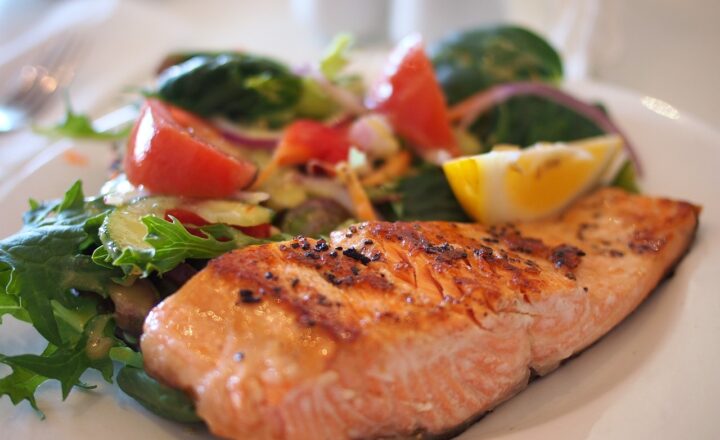A Culinary Journey: The Cultural Significance of Food in Different Societies
November 18, 2024

Food is much more than just sustenance; it’s a reflection of culture, tradition, and the tapestry of human interaction. Across various societies, culinary practices embody historical, geographical, and socioeconomic contexts that define identities. This article explores the profound role of food in different cultures and its significance in shaping social connections, traditions, and heritage.
1. Understanding Food as Culture
Food culture refers to the practices, beliefs, and social institutions surrounding the production and consumption of food. It encompasses everything from agricultural methods and cooking techniques to food choices and eating habits. The sociologist Claude Lévi-Strauss famously argued that cooking is a form of language, conveying deep meanings about civilization.
**Meaning Behind Culinary Choices:** Different societies reflect their histories through culinary choices. For instance, in Japan, rice symbolizes purity and sustenance, while in Italy, pasta is a staple representing regional diversity. These ingredients do not merely feed; they tell stories and pass down traditions.
2. Festivals and Food Traditions
Every culture has food-related festivals that celebrate their heritage. These occasions often involve unique dishes that hold cultural significance.
**Examples Include:**
– **Diwali in India:** Sweets like ladoos and barfis signify the festival’s joy, representing the triumph of light over darkness.
– **Thanksgiving in the United States:** The turkey meal symbolizes gratitude and the harvest, fostering family connections.
Participants engage in these culinary traditions to strengthen community bonds while honoring their cultural narratives.
3. Regional Ingredients and Ecological Contexts
Food systems are closely tied to regional ingredients, seasonal changes, and environmental contexts. Different environments dictate what can be cultivated, leading to distinct culinary practices.
**Case Study: Mediterranean Diet**
The Mediterranean diet is renowned for its health benefits, emphasizing fresh vegetables, fruits, olive oil, and fish. This diet’s evolution parallels the Mediterranean climate, highlighting how geography informs food choices.
In contrast, the Inuit diet, rich in fish, whale, and caribou, reflects extreme cold climates and hunting traditions, showcasing how regional ecosystems shape culinary identities.
4. Food and Identity: A Nexus of Belonging
Food plays a crucial role in expressing and solidifying identities within societies. This is especially notable in diasporic communities, where traditional dishes evoke nostalgia and reinforce cultural ties.
**For Instance:**
– The prevalence of Mexican cuisine in the United States serves as a bridge between home and new environments, allowing immigrants to forge cultural connections.
– In India, regional cuisines vary significantly, representing the diversity of ethnicity and lifestyle—each state boasts its own culinary identity.
Through food, people celebrate their heritage and maintain connections to their roots, despite geographical displacements.
5. Food as a Medium for Diplomacy
Food serves not just as a source of nourishment but as a diplomatic tool, fostering collaboration between nations. Sharing a meal often paves the way for peace and understanding.
**Examples of Culinary Diplomacy:**
– **State Dinners:** Leaders or diplomats will often hold state dinners, where the choice of menu can symbolize goodwill, respect, and friendship.
– **Food Festivals:** International food festivals bring together diverse cultures under one banner, allowing countries to showcase their culinary heritage and promote cultural understanding.
These practices highlight the intricate relationship between food, culture, and politics.
6. Health and Nutrition: Cultural Impacts on Diet
Food choices in various societies are also informed by health and nutritional practices that promote well-being.
**Cultural Dietary Practices:**
– In Asian cultures, the use of diverse spices is not only for flavor but also for health benefits; turmeric, for instance, is celebrated for its vitality-promoting properties.
– Traditional Mediterranean eating patterns correlate with lower rates of heart diseases, showcasing how cultural diets can impact health outcomes.
Recognizing these connections fosters health-conscious choices that respect cultural backgrounds.
7. Modern Challenges to Culinary Traditions
As globalization intensifies, traditional cuisines face challenges from fast food, convenience diets, and cultural homogenization. Many societies strive to keep their culinary traditions alive amidst these pressures.
**Initiatives to Preserve Culinary Heritage Include:**
– **UNESCO’s Intangible Cultural Heritage Lists:** Recognizing various cuisines as cultural heritage fosters appreciation and conservation.
– **Local Food Movements:** Advocating for farm-to-table practices helps communities maintain their culinary roots, valuing local ingredients and traditional cooking methods.
These efforts emphasize the need for a balance between modern food trends and preserving cherished traditions.
Conclusion
Food lies at the heart of cultural identity, history, and social interaction across the globe. It informs our celebrations, symbolizes our heritage, and oftentimes leads to greater diplomatic dialogue. As we embark on culinary journeys, it’s crucial to recognize and respect the diverse food traditions that enrich our world. Through understanding, we can foster greater appreciation for not just what we consume, but also for the interconnected narratives woven through the universal language of food.








